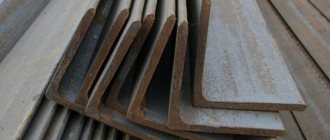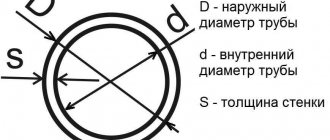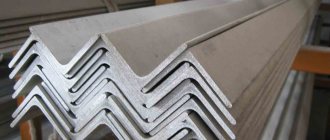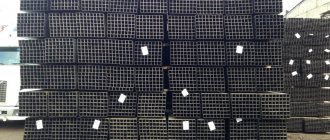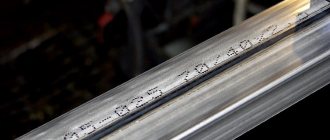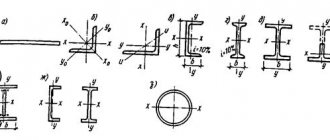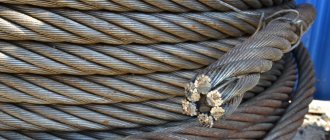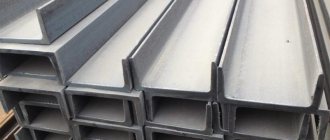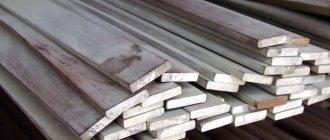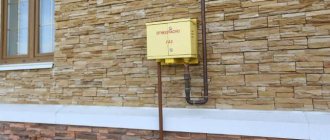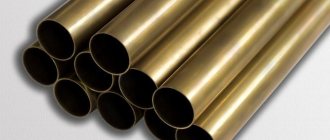Bent unequal flange channel is produced in accordance with GOST 8281-80. It has a U-shaped cross-section and is one of the most common types of metal products.
In addition to it, a bent equal-flange channel is often used - it is manufactured according to GOST 8278-83, and also has a U-shaped section. Such a product can have different sizes and weight of 1 linear meter.
Equal and unequal channels differ in that the first option has the same flange (edge) size. In the second, their width is accordingly different.
Application areas of bent equal-flange channel
The strength of a bent profile is lower than that of hot-rolled products, so it is usually not used as load-bearing elements of buildings. Bent channel is in demand:
- in low-critical areas of steel structures;
- as an additional reinforcing element of the supporting frame;
- in finishing works (in the manufacture of a frame intended for installation of cladding of the internal and external surfaces of walls or installation of interior partitions);
- for the manufacture of frame structures of cars, carriages;
- in the production of construction and road equipment.
Geometric indicators
The state standard regulates all sizes of rolled metal products, according to production technology. The main parameters are:
- thickness, wall height;
- rolling length;
- internal corner radius;
- shelf curvature radius;
- thickness, shelf width.
There is also a distribution according to the level of rolling accuracy:
- marking “A” - high accuracy;
- "B" - increased;
- "B" is normal.
What sizes are there?
The dimensions of our products are varied, they are determined by the manufacturer and production technology. Typically used standard sizes:
- Element height. This is the name of the gap between parallel shelves, measured in millimeters. This parameter is in the range of 50-400 mm.
- The width of the shelf is the distance from the outer corner of the part to the end of the parallel-installed edges. Sizes of 32-115 mm are allowed here.
- Beam thickness. This indicator depends on the category, it can be 4.4 – 8 mm.
- Shelf thickness. According to the product labeling, it is in the range of 7-13.5 mm.
A standard channel is no longer than 12 m. Note that there are elements on the market with a higher value, but they are usually made to order.
Features of bent channel
Hot-rolled and cold-rolled steels are used as the starting material, which, according to their chemical composition, can be carbon (ordinary and high-quality) and low-alloy. The roll forming equipment used in manufacturing is capable of not only giving products the desired profile, but also correcting some defects. According to the bending accuracy, these products can be: high, increased, or normal accuracy.
Distinctive features of bent channel:
- roundness of external corners;
- uniform thickness;
- dimensional accuracy.
These features make welding and other types of processing convenient and eliminate the need for chamfering.
Production principle
Modern production of this universal part is based on the use of hot-rolled, cold-rolled and low-alloy steel. Experts say that hot-rolled technology has managed to prove itself exclusively on the positive side in the field of mass production of channels, beams and other products.
The steel version of this metal product involves the use of cold rolled products, thanks to which it is possible to create high-quality products that will well withstand any deformation. As for low-alloy steel, such materials are the most expensive, but also reliable. It is worth noting that this type of material is diluted with peculiar impurities, which several times increase the final performance qualities of the metal itself.
To ensure that all products meet established quality standards, their production must be carried out exclusively by qualified personnel. Before starting the most important process - the manufacture of channels, all parts must be checked for chips and deformations. The edges and ends of the workpieces should not have any nicks or delaminations.
For the production of profiles, only high-quality equipment is used, which is why several important steps are required in order to ultimately obtain high-quality products. The choice of production technology depends on the specific profiling. After forming the segment, universal cutting is carried out by the mill. As for piece profiling, all necessary cutting is carried out in advance.
Due to the fact that this type of profile is produced using a special machine, any changes in calibration can lead to a situation where the final quality of the product will be reduced several times. In this case, you may encounter the following types of damage: helical shape, waviness, distortion of shape, crescent shape.
The range of channels is varied, which is why the use of a particular product may vary depending on the required performance qualities. It is also worth considering that the numbers printed on the product always indicate its height. For example: channel 11 can be used for the installation of structures, and channel 16 is most suitable for reinforcing buildings, as it has high strength values. Of course, depending on the type of channel, its final price also varies.
What other brands are there?
We have named the main indicators, the most current options, but there are 3 more brands of parts:
- “E” (economical) - has thinner shelves and walls, is lightweight, and therefore inexpensive. The edges of its shelves are only parallel. If there is no need to support heavy structures, significant funds are saved on construction.
- “L” (light) – similar in shape to the previous one. Manufactured according to GOST, the main raw materials are light metals, for example, aluminum.
- “S” (special) - differs in its own dimensions, used in narrow areas: the construction of cars, cars (GOST 19425-74 and 5267.1-90).
Load calculation algorithm
- We find out the full value of the load on the profile included in the design and increase it by multiplying it by the reliability factor for the loads (we find it in the standards);
- We multiply the resulting product by the channel pitch;
- We determine the maximum bending moment - information on the channel is in the GOST tables. We calculate: Mmax (bending moment) in KiloNewtons per meter is equal to the product of the design load by the square of the length of the channel. Clarification: 1 kNm is equal to 102 kgcm.
The moment of resistance of the product - Wtr, is found by the following calculations: Mmax is multiplied by the coefficients for operating conditions and divided by the coefficient taking into account plastic deformations - 1.12. We compare the obtained result with the provisions in GOST and find the parameters of the desired profile.
Important!
According to the channel number, you always need to select a little more than what was calculated.
Weight of products
The indicator is based on several parameters:
- length;
- width;
- the material used;
- the thickness of the cross beam and parallel shelves.
Part 12P, made of aluminum alloy and steel, can have different weight categories with the same external characteristics. There are also multi-shelf products, when the side edges have different heights. Of course, you can calculate the weight of such products, but only using specific formulas.
Standard metal beams weigh 4.8-48.3 kg. According to modern GOST and European standards, a deviation of 6.5% is possible for each piece, if the difference in the mass of the entire batch is no more than 4%.
